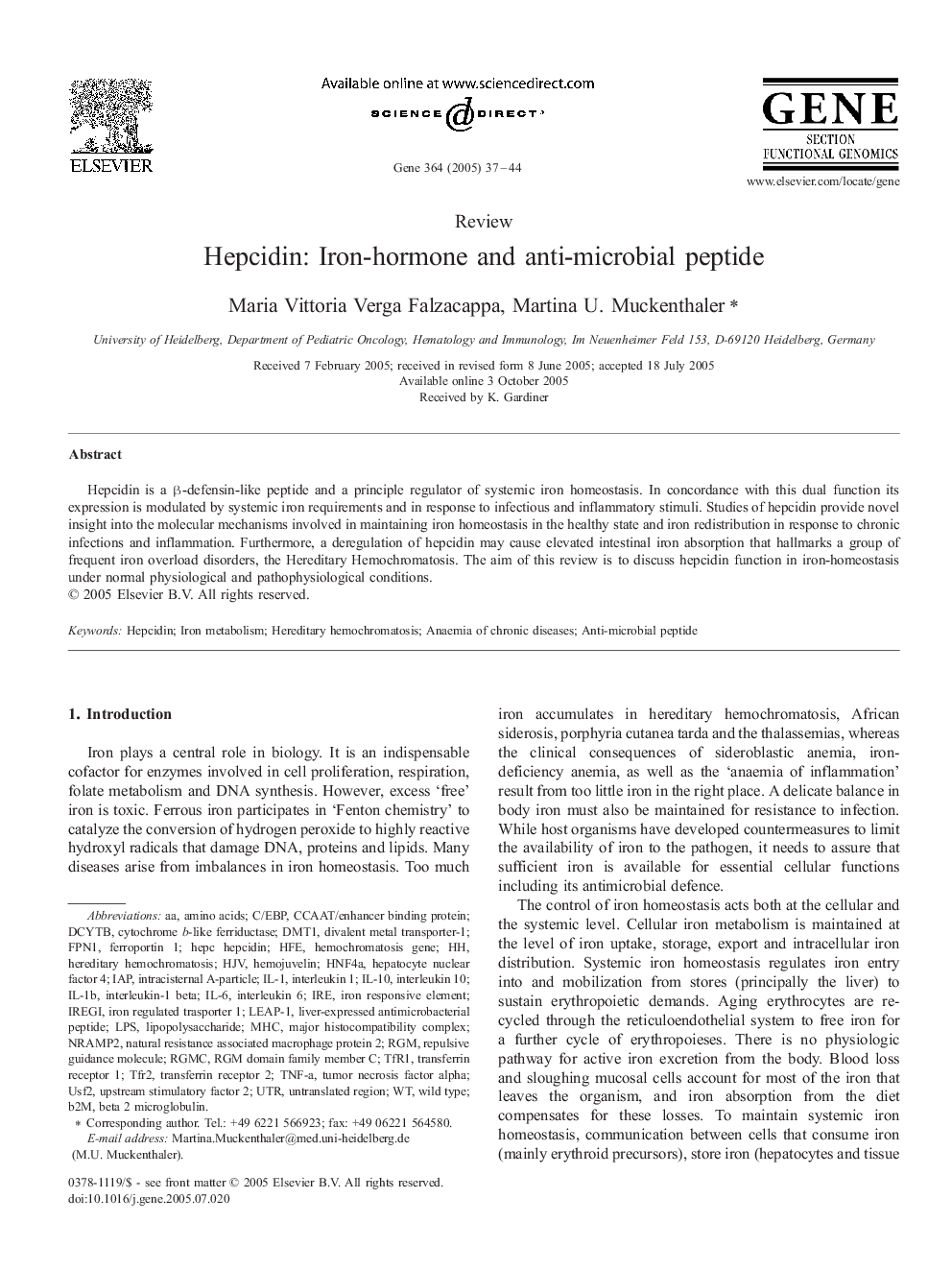| Article ID | Journal | Published Year | Pages | File Type |
|---|---|---|---|---|
| 9126830 | Gene | 2005 | 8 Pages |
Abstract
Hepcidin is a β-defensin-like peptide and a principle regulator of systemic iron homeostasis. In concordance with this dual function its expression is modulated by systemic iron requirements and in response to infectious and inflammatory stimuli. Studies of hepcidin provide novel insight into the molecular mechanisms involved in maintaining iron homeostasis in the healthy state and iron redistribution in response to chronic infections and inflammation. Furthermore, a deregulation of hepcidin may cause elevated intestinal iron absorption that hallmarks a group of frequent iron overload disorders, the Hereditary Hemochromatosis. The aim of this review is to discuss hepcidin function in iron-homeostasis under normal physiological and pathophysiological conditions.
Keywords
TfR1UTRUSF2Ferroportin 1RGMNRAMP2Fpn1DcytBHNF4Ab2mhemochromatosis geneTfR2IREHJVDMT1IAPTNF-aLPSIL-6IL-1HFEIL-10C/EBPIL-1bAmino acidsinterleukin 1Interleukin 10interleukin 6Interleukin-1 betabeta 2 microglobulintumor necrosis factor alphaintracisternal A-particleHepatocyte nuclear factor 4iron responsive elementdivalent metal transporter-1lipopolysaccharideIron metabolismMHCmajor histocompatibility complexuntranslated regionrepulsive guidance moleculewild typehemojuvelinhereditary hemochromatosisHepcidinCCAAT/enhancer binding proteinanti-microbial peptideTransferrin receptor 2transferrin receptor 1
Related Topics
Life Sciences
Biochemistry, Genetics and Molecular Biology
Genetics
Authors
Maria Vittoria Verga Falzacappa, Martina U. Muckenthaler,
